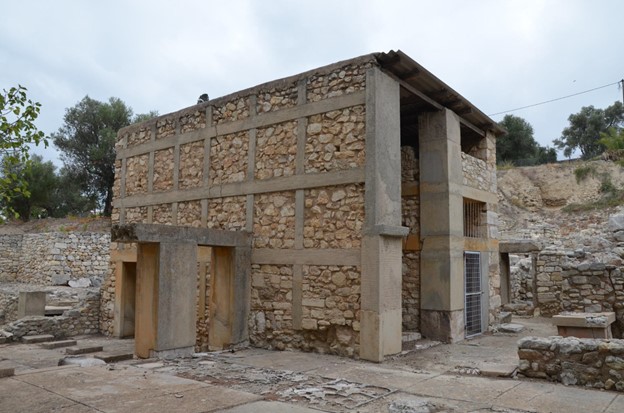
The Race to Elevate Minoan Palaces to UNESCO Glory!
Authorities in Greece are on the brink of completing the application to have Crete’s ancient Minoan palaces recognized on the UNESCO World Heritage List. Spearheaded by the Ministry of Culture, this application encompasses the remarkable sites of Zakros, Knossos, Phaistos, Malia, Zominthos, and Kydonia for their historic and cultural significance.
This candidacy dossier is poised for a thorough review by the relevant UNESCO committee, with an aim for the official nomination process to unfold in 2024.
Among these historic treasures, the Palace of Knossos stands out, situated merely five kilometers south of Heraklion, marking it as the most expansive of the Minoan palaces on the island. It represents the epicenter of the Minoan civilization, which saw its zenith over 3,500 years ago on Crete. The initial unearthing of Knossos at the dawn of the 20th century marked a significant milestone, shifting its status from a mythic entity in Greek lore to a tangible historical site.
The Malia Palace, originating from the Middle Bronze Age, met its demise through an earthquake in the Late Bronze Age, a fate it shared with Knossos among others. It was, however, resurrected towards the tail end of the Late Bronze Age. The remnants that greet today’s visitors hail from this era of reconstruction, showcasing a sprawling central courtyard and a labyrinth of compact chambers alongside a peculiar kernos stone, reminiscent of a millstone with a cup on its side.
Zakros, nestled on Crete’s east coast, flourished as a key Minoan trade and administrative hub due to its protected harbor and strategic location. Despite its destruction around 1450 BC, the remnants of the Zakro Palace continue to captivate tourists.
Phaistos commands attention with its majestic palace ruins that have surveyed the Mediterranean landscape for millennia. Though it stands in the shadow of Knossos in terms of fame, Phaistos was a critical site in Crete’s storied past, serving as a testament to the island’s illustrious heritage.
Discovered in 1982, Zominthos reveals a sophisticated Minoan summer palace, offering insights into the political, economic, and religious facets of its era. Situated close to the religious site of Ideo Andros, its significance spans across various domains, underlining its importance in the Minoan civilization.
Lastly, the ancient city-state of Kydonia, modern-day Chania, bears the historical layers of Crete’s northwest coast. Excavations in the area have unearthed artifacts tracing back to the Neolithic era, with evidence of continuous habitation from the Early Minoan period, adding another layer to Crete’s rich historical tapestry.




